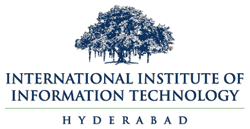December 2022
Kanishk Jain received his Master of Science in Computer Science and Engineering (CSE). His research work was supervised by Dr. Vineet Gandhi. Here’s a summary of his research work on Visual Grounding for Multi-modal Applications:
The task of Visual Grounding is at the intersection of computer vision and natural language processing tasks. The Visual Grounding (VG) task requires spatially localizing an entity in a visual scene based on its linguistic description. The capability to ground language in the visual domain is of significant importance for many real-world applications, especially for human-machine interaction. One such application is language-guided navigation, where the navigation of autonomous vehicles is modulated using a linguistic command. The VG task is intimately linked with the task of vision-language navigation (VLN), as both the tasks require reasoning about the linguistic command and the visual scene simultaneously. Existing approaches to VG can be divided into two categories based on the type of localization performed: (1) bounding-box/proposal-based localization and (2) pixel-level localization. This work focuses on pixel-level localization, where the segmentation mask corresponding to the entity/region referred to by the linguistic expression is predicted. The research in this thesis focuses on a novel modeling strategy for visual and linguistic modalities for the VG task, followed by the first-ever visual grounding based approach to the VLN task.
We first present a novel architecture for the task of pixel-level localization, also known as Referring Image Segmentation (RIS). The architecture is based on the hypothesis that both intra-modal (word-word and pixel-pixel) and inter-modal (word-pixel) interactions are required to identify the referred entity successfully. Existing methods are limited because they either compute different forms of interactions sequentially (leading to error propagation) or ignore intra-modal interactions. We address this limitation by performing all three interactions synchronously in a single step. We validate our hypothesis empirically against existing methods and achieve State-Of-the-Art results on RIS benchmarks.
Finally, we propose the novel task of Referring Navigable Regions (RNR), i.e., grounding regions of interest for navigation based on the linguistic command. RNR is different from RIS, which focuses on grounding an object referred to by the natural language expression instead of grounding a navigable region. We additionally introduce a new dataset, Talk2Car-RegSeg, which extends the existing Talk2car dataset with segmentation masks for the regions described by the linguistic commands. We present extensive ablations and show superior performance over baselines on multiple evaluation metrics. A downstream path planner generating trajectories based on RNR outputs confirms the efficacy of the proposed framework.

